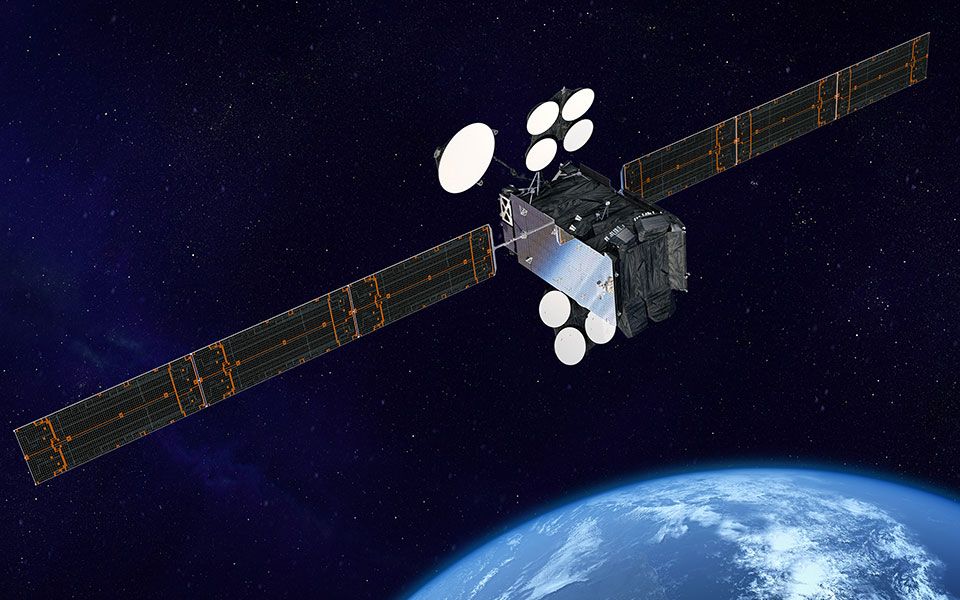FCC to Open Up More than 20,000 MHz in Satellite Spectrum
Amount is more than the sum total of all spectrum currently available for satellite broadband, agency says

WASHINGTON—The Federal Communications Commission voted unanimously to start a process that could unlock more than 20,000 megahertz of spectrum for high-speed internet delivered from space.
That amount, approved at the agency’s May 22 open meeting, is more than the sum total of all spectrum available for satellite broadband today, the agency reported.
The agency reported that the vote is part of its Final Frontiers agenda to "secure U.S. leadership in space and supercharge the possibilities of satellite broadband."
The decision comes as the FCC investigates whether to reclaim some satellite spectrum from Echostar’s Dish. Recently, the Space Bureau established SB Docket No. 25-173 to seek comment on EchoStar’s use of the 2,000-2,020 MHz (Earth-to-space) and 2,180-2,200 MHz (space-to-Earth) (2 GHz bands) for mobile-satellite service (MSS).
EchoStar has also come under fire from Elon Musk’s SpaceX, which filed a letter with the FCC saying the commission “must swiftly recognize that Dish has left this valuable midband spectrum chronically underused and take steps to welcome new satellite entrants who will finally put this spectrum to use to serve the American people.”
In the new Notice of Proposed Rulemaking to open up 20,000 megahertz of spectrum, the Commission is seeking public comment on expanding satellite connectivity across four spectrum bands: 12.7-13.25 GHz, 42.0-42.5 GHz, 51.4-52.4 GHz, and the so-called “W-band” at 92.0-94.0 GHz, 94.1-100 GHz, 102.0-109.5 GHz, and 111.8-114.25 GHz.
“These underused bands—located in “spectrum neighborhoods” ideal for satellite broadband—are prime candidates for modernization,“ the FCC said.“For many years, outdated regulations restricted satellite operations in the 12.7 GHz band. The 42 GHz band is one of the rare bands that still remains greenfield. The 52 GHz band has no licensed commercial users. And the W-band presents exciting opportunities for gigabit capacity over a massive, but mostly empty, swath of spectrum long considered outside the practical realm of physics.
The professional video industry's #1 source for news, trends and product and tech information. Sign up below.
“The Commission intends to make good on its years-long efforts to unleash these bands for next-generation services,” the FCC continued. “The 12.7 and 42 GHz bands, which the Commission previously considered for terrestrial use, are adjacent to workhorse satellite frequencies in the Ku- and V- bands. Meanwhile, there has been growing and intense support to open up the 52 GHz band domestically after international decisions at WRC-19. And by seeking comment on the W-band, the Commission continues recent initiatives to push the limits of high-band spectrum and provide a “first-mover advantage” for U.S.-licensed operators.”
The May 22 action was approved unanimously by FCC Chair Brendan Carr and Commissioners Geoffrey Starks, Nathan Simington and Anna Gomez.
George Winslow is the senior content producer for TV Tech. He has written about the television, media and technology industries for nearly 30 years for such publications as Broadcasting & Cable, Multichannel News and TV Tech. Over the years, he has edited a number of magazines, including Multichannel News International and World Screen, and moderated panels at such major industry events as NAB and MIP TV. He has published two books and dozens of encyclopedia articles on such subjects as the media, New York City history and economics.

